Central Christchurch
Much damaged by the 2011 earthquake, Christchurch’s city centre has come back to life, with most rebuilding projects, repairs and restorations now completed. Offices and retail have moved back in, and the centre now has a good range of restaurants, cafes and bars.
Central Christchurch is very walkable, and without too much effort you can visit its main attractions.
Cathedral Square
The centrepiece of Cathedral Square is Christchurch’s Anglican gothic revival Cathedral. It is still undergoing earthquake repairs and remains closed to visitors. The other prominent feature in the Square is 18-metre high Chalice, one of sculptor Neil Dawson’s great public artworks. The conical structure represents leaves of native trees of Canterbury, swirling in an eddy of the nor’west wind.

Canterbury Museum
In the late 19th century, the Canterbury Museum traded moa bones found in Canterbury, for artefacts from around the world. Consequently the museum has a surprisingly good collection for a city of this size. There are exhibitions of New Zealand’s natural history, Maori art and culture, and early European settlement in Christchurch. More information at the Canterbury Museum website.
Anyone with an interest in Antarctic exploration should visit Canterbury Museum’s Antarctic Galleries, which house artefacts from the Scott, Amundsen and Shackleton expeditions of the early 20th century; also vehicles used in the first ever successful trans-Antarctic expedition (Fuchs-Hillary, 1958), and a fully reconstructed scientific station returned from the ice.
The Christchurch Arts Centre
When the University of Canterbury moved to the suburbs in the 1960s, central Christchurch lost a vibrant link to the academic world. In compensation, the city gained the university’s collection of Gothic revival stone buildings, quadrangles and cloisters, which now house the Arts Centre. Much of the Arts Centre has reopened following earthquake repairs and strengthening. The Great Hall, entered from the main quadrangle, is well worth a look when it is open to the public.
A must for anyone with an interest in science is the Rutherford’s Den museum, where ‘the father of nuclear physics’, Ernest Rutherford, carried out his first ever experiments as a post-graduate student at the university.
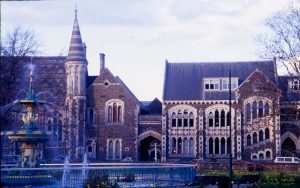
Christchurch Botanic Gardens
You can while away an hour or two exploring the Christchurch Botanic Gardens, a 30 hectares (74 acres) park mostly set within a loop of the Avon River. The first plantings were in 1863, only 13 years after the founding of Christchurch. There is now an extensive collection of specimen trees from around the world. There are also large beds of annual and perennial flowering plants, and a number of conservatories. There is also a large New Zealand native tree and shrub section.
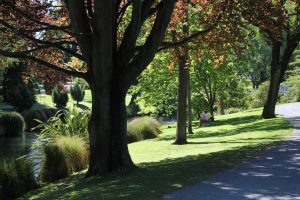
Encircling the Botanical Gardens on the west side of the city centre is Hagley Park, Christchurch city’s largest park. Ringed by trees (largely oaks), with sports fields, ponds, a nine-hole golf course and a network of paths, this is where you can find wide open spaces within minutes walking of the city centre.
Punting or kayaking on the Avon River
You can go Punting on the Avon River from the Antigua Boatsheds near the city’s public hospital. Alternatively, if you prefer to propel yourself, you can hire a kayak or rowboat from the Antigua Boatsheds, and enjoy a very pleasant paddle through the Botanical Gardens.
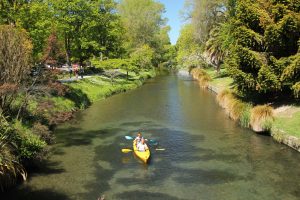
Christchurch Earthquake National Memorial
The Christchurch Earthquake National Memorial is a long memorial wall that displays the names of the 185 people who died in the February 2011 earthquake. Set on an attractive sweep of the Avon River, it is a poignant place to visit and to reflect on the city’s loss.
Christ’s College
Christ’s College, next to the Canterbury Museum, is one of the oldest schools in New Zealand. It has a number of historic buildings attractively arranged around a large quadrangle in the tradition of old public schools in Britain. You can peer at the quadrangle through the gates, but to go further you need to take a tour, which run three times per week in the summer months.
Victoria Square
Victoria Square, with its early 20th century statues of Queen Victoria and explorer James Cook, is a reminder of the very strong sentiment that was attached to Britain at that time. Near the Avon River is a pou, a tall Maori carving with themes of Maori mythology and the relationship of the local Ngai Tahu tribe with the land and resources in Canterbury.
Christchurch Art Gallery
The Christchurch Art Gallery is a striking glass-fronted building that houses permanent collections of Canterbury and New Zealand art, as well as a range of temporary exhibitions. Free entry, although individual exhibitions may be charged.
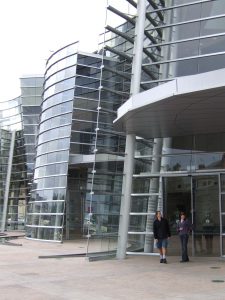
Other Christchurch attractions
The International Antarctic Centre
The International Antarctic Centre is the world’s largest public attraction dedicated to Antarctica. Highlights include the “Snow and Ice Experience” (put on a jacket, step on to the snow and experience the chill of an Antarctic wind); a fun ride on a Hagglund all-terrain vehicle; a stunning 14-minute audio-visual; and galleries of Antarctic natural history, marine life, polar exploration and modern-day Antarctic bases.
The Little Blue Penguin enclosure allows you to get up close to these engaging creatures, and the underwater viewing is a delight at feeding time. The International Antarctic Centre is located within easy walking distance of Christchurch International Airport, so can be easily combined with your flight out of the city.

Mona Vale
A short distance from the city centre, the large 19th century homestead is set in one of Christchurch’s most beautiful public gardens. Enjoy the many specimen trees, border plantings, rose garden, lily pond, and one of the loveliest stretches of the Avon River.

Riccarton Bush
Riccarton Bush is the largest surviving remnant of the forests that once covered the Canterbury Plains in pre-human times, and it is situated right in Christchurch, only a few minutes driving (or an easy bus ride or 40 minute walk) from the city centre. As you walk among the tall kahikatea trees, only the distant hum of traffic reminds you that you are in a large city. With its diverse native trees, climbers and ferns, this is recommended for anyone with a botanical interest. A predator-proof fence makes this a sanctuary for native birds such as fantails, grey warblers, bellbirds, silvereyes and kereru (NZ’s large native pigeon).
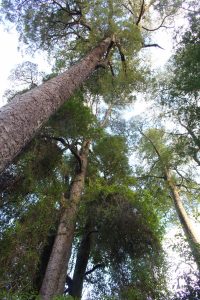
Deans Cottage
Right next to Riccarton Bush is Deans Cottage, the oldest remaining building on the Canterbury Plains. It was constructed by the pioneering Deans brothers from Scotland in 1843, seven years before Christchurch itself was founded.
The cottage and the much larger Riccarton House (adjacent) are in a lovely park-like setting by the Avon River (here a small stream), dominated by large exotic trees planted by the Deans over 150 years ago. There is a popular outdoor market here on Saturday mornings.
Air Force Museum
If you are an aviation buff, visit the Air Force Museum at Wigram. There are 28 historical military aircraft (World War II and post-war), plus hands-on displays, all under a single roof.
Lyttelton
A road tunnel from Christchurch brings you to the city’s port town. This is a different world from the city; Lyttelton is set on a natural harbour which is the much-eroded remnant of an ancient volcanic crater. With its steep, craggy backdrop, streets of wooden cottages, and a good choice of pubs and cafes, this is a popular destination for city dweller and visitors alike.
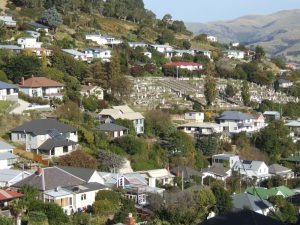
Beaches
There are two beach suburbs easily accessible, including by city bus. Sumner is picturesque, being enclosed by hills and cliffs. It has a beach, a long promenade and a village feel with popular cafes and bars. Surfing is popular here and at nearby Taylor’s Mistake.
New Brighton has a wide stretch of sand, is good for swimming at all tides. The New Brighton Pier stretches 300 metres out into the Pacific.
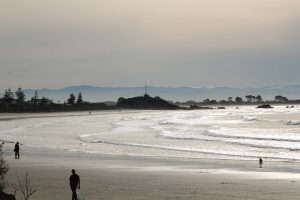
Walks near Christchurch
The Port Hills
The best walks in the immediate vicinity of Christchurch are in the once-volcanic Port Hills on the southern edge of the city. A network of tracks weave around rock outcrops, through patches of native forest and shrubland, and across tussock tops. The full traverse is known as the Crater Rim Walkway. Because this often meets the Summit Road (and other roads), it is easy to just walk sections of this track at a time. There are excellent views over the city and Canterbury Plains to the mountains, and also across Lyttelton Harbour.
Various Port Hills tracks can be accessed from the Dyers Pass and Evans Pass roads that cross the hills. Tracks are also accessible from Cashmere, Halswell, St Martins, Heathcote, Redcliffs, Sumner, Lyttelton and Governor’s Bay – most of which can be reached by city bus services.
You can download walking brochures of the Port Hills, or pick them up from some city libraries.

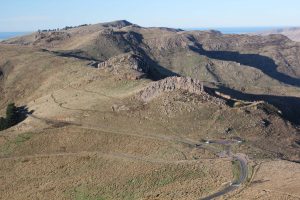
Walks elsewhere
There is a network of walking tracks on Banks Peninsula. Some of the best are in Orton Bradley Park and on the adjacent areas of Mt Bradley and Mt Herbert. The Akaroa area is also rich in walking opportunities, including the many tracks in Hinewai Reserve.
Beyond the Canterbury plains, there are excellent walking tracks up a number of the ‘foothills’, including Mt Richardson, Mt Thomas, and Mt Grey.
If you want to do some serious walking or hiking (‘tramping’) further afield, then download advice, maps and brochures from the Department of Conservation (DOC) website – or pick some up from the DOC Visitor Centre in the Arts Centre.
There are also several excellent walking guides, including by Mark Pickering, that cover the Christchurch and Canterbury region.